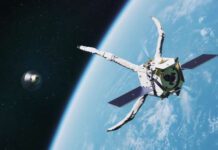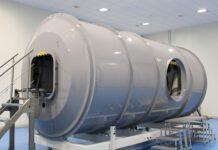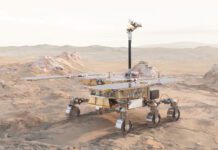
NASA has announced that it will provide approximately $30 million (€28 million) in 2024 to fund the development of ESA’s ExoMars mission. According to ESA, the exact amount is still being determined, as is the investment for the coming years leading up to the new launch date.
ExoMars was originally a joint mission with Russia. ESA had committed to supplying the rover and Roscosmos the lander. The mission had been in the final stretch with a launch expected in 2022. However, after Russia invaded Ukraine, ESA Member States voted to pull out of the deal.
ESA is now building the lander itself and will also be required to update the rover which had already been completed. NASA will provide financial and technical support.
According to Pietro Baglioni, the ExoMars Rosalind Franklin rover team leader, a new launch date of October 2028 is being targeted.
“It cannot be earlier because we need time to redesign and build and requalify the lander,” said Baglioni. “We don’t want to go beyond this date because then the environmental conditions on Mars are not favourable for the mission we want to do with the rover.”
Europe will, however, not be starting from scratch with the lander. Many significant components had been developed in Europe and as such, the parachutes, computer, and landing radar system can all be reused in the new lander. European industry will now have to tackle the development of the Entry Descent and Landing Module, its aeroshell, the landing platform, and the rover egress system among many other key systems. According to Baglioni, NASA may also pitch in with key elements of the lander’s propulsion system.
In addition to building the lander, ExoMars teams will also have to implement key changes to the rover to cope with a new set of mission requirements.
“The rover was accepted and qualified for the 2022 scenario,” said Andrea Merlo, head of robotics at Thales Alenia Space, the mission’s prime contractor. “We are now facing a new mission scenario and the idea is to upgrade the rover in order to be capable to survive what is called the global dust storm season.”
Upgrades to the rover include tiltable solar arrays to allow the rover to clear dust and nuclear power to keep the rover warm.







